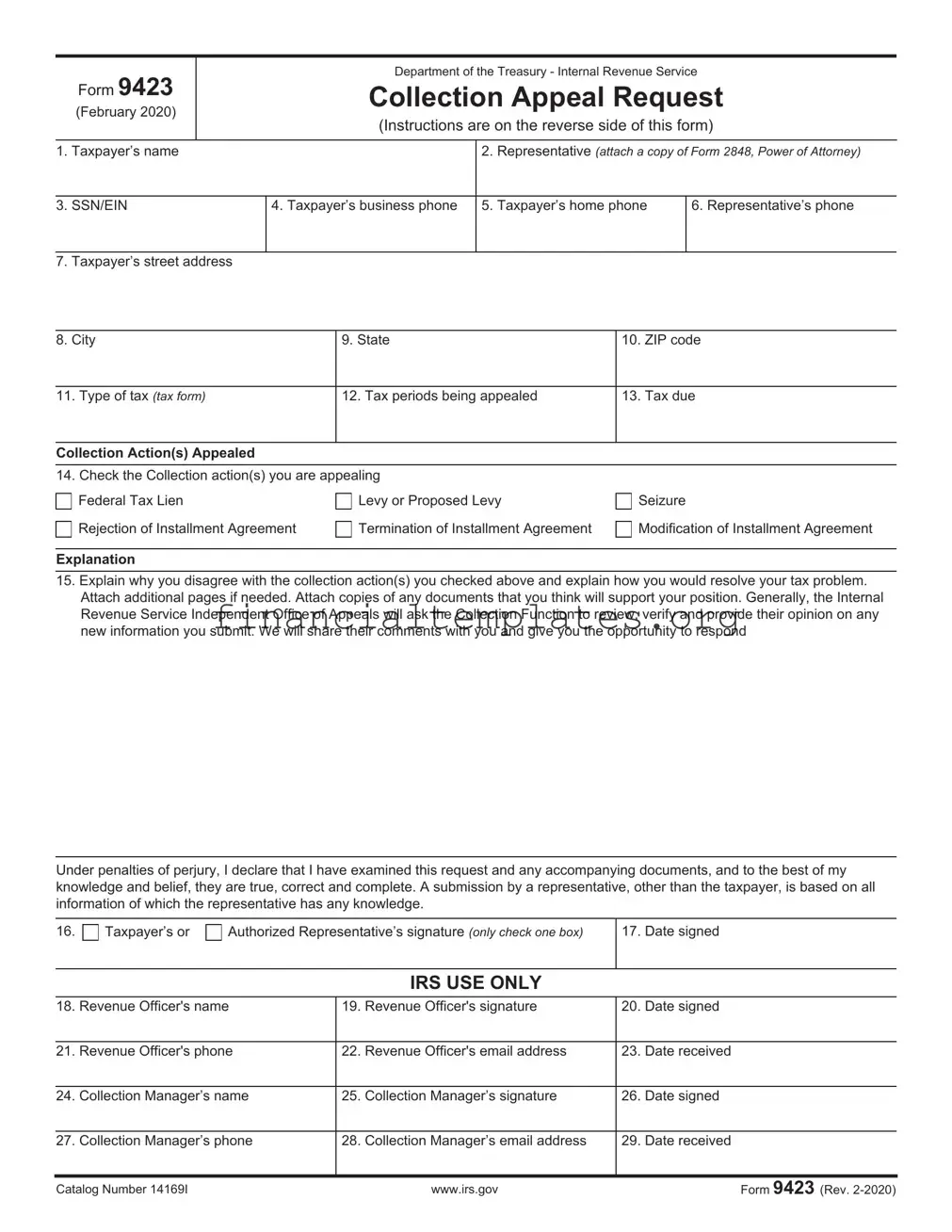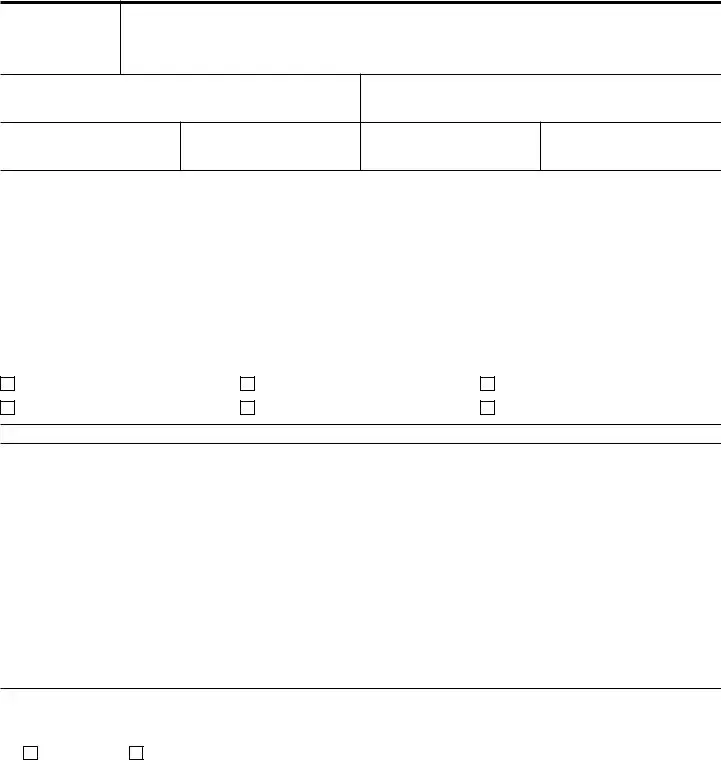Instructions for Form 9423, Collection Appeal Request
For Liens, Levies, Seizures, and Rejection, Modification or Termination of Installment Agreements
A taxpayer, or third party whose property is subject to a collection action, may appeal the following actions under the Collection Appeals Program (CAP):
a. Levy or seizure action that has been or will be taken.
b. A Notice of Federal Tax Lien (NFTL) that has been or will be filed.
c. The filing of a notice of lien against an alter-ego or nominee's property.
d. Denials of requests to issue lien certificates, such as subordination, withdrawal, discharge or non-attachment.
e. Rejected, proposed for modification or modified, or proposed for termination or terminated installment agreements. f. Disallowance of taxpayer's request to return levied property under IRC 6343(d).
g. Disallowance of property owner's claim for return of property under IRC 6343(b).
How to Appeal If You Disagree With a Lien, Levy, or Seizure Action
1.If you disagree with the decision of the IRS employee, and wish to appeal, you must first request a conference with the employee's manager. If you do not resolve your disagreement with the Collection manager, submit Form 9423 to request consideration by Appeals. Let the Collection office know within two (2) business days after the conference with the Collection manager that you plan to submit Form 9423. The Form 9423 must be received or postmarked within three (3) business days of the conference with the Collection manager or collection action may resume.
Note: If you request an appeal after IRS makes a seizure, you must appeal to the Collection manager within 10 business days after the Notice of Seizure is provided to you or left at your home or business.
2.If you request a conference and are not contacted by a manager or his/her designee within two (2) business days of making the request, you can contact Collection again or submit Form 9423. If you submit Form 9423, note the date of your request for a conference in Block 15 and indicate that you were not contacted by a manager. The Form 9423 should be received or postmarked within four (4) business days of your request for a conference as collection action may resume.
3.On the Form 9423, check the collection action(s) you disagree with and explain why you disagree. You must also explain your solution to resolve your tax problem. Submit Form 9423 to the Collection office involved in the lien, levy or seizure action.
4.In situations where the IRS action(s) are creating an economic harm or you want help because your tax problem has not been resolved through normal channels, you can reach the Taxpayer Advocate Service at 877-777-4778.
How to Appeal An Installment Agreement Which Has Been Rejected, Proposed for Modification or Modified, or Proposed for Termination or Terminated
1.If you disagree with the decision regarding your installment agreement, you should appeal by completing a Form 9423, Collection Appeal Request.
2.You should provide it to the office or revenue officer who took the action regarding your installment agreement, within 30 calendar days.
Note: A managerial conference is not required. However, it is strongly recommended a conference be held with the manager whenever possible.
Important: Never forward your request for an Appeals conference directly to Appeals. It must be submitted to the office which took the action on your installment agreement.
What Will Happen When You Appeal Your Case
Normally, we will stop the collection action(s) you disagree with until your appeal is settled, unless we have reason to believe that collection or the amount owed is at risk.
You May Have a Representative
You may represent yourself at your Appeals conference or you may be represented by an attorney, certified public accountant or a person enrolled to practice before the IRS. If you want your representative to appear without you, you must provide a properly completed Form 2848, Power of Attorney and Declaration of Representative. You can obtain Form 2848 from your local IRS office, by calling 1-800-829-3676, or by going to www.irs.gov.
Decision on the Appeal
Once Appeals makes a decision regarding your case, that decision is binding on both you and the IRS. You cannot obtain a judicial review of Appeals' decision following a CAP. However, there may be other opportunities to obtain administrative or judicial review of the issue raised in the CAP hearing. For example, a third party may contest a wrongful levy by filing an action in district court. See Publication 4528, Making an Administrative Wrongful Levy Claim Under Internal Revenue Code (IRC) Section 6343(b).
Note: Providing false information, failing to provide all pertinent information or fraud will void Appeals' decision.
Refer to Publication 594, The IRS Collection Process, and Publication 1660, Collection Appeal Rights, for more information regarding the Collection Appeals Program. Copies of these publications can be obtained online at www.irs.gov.
Privacy Act
The information requested on this Form is covered under Privacy Acts and Paperwork Reduction Notices which have already been provided to the taxpayer.


